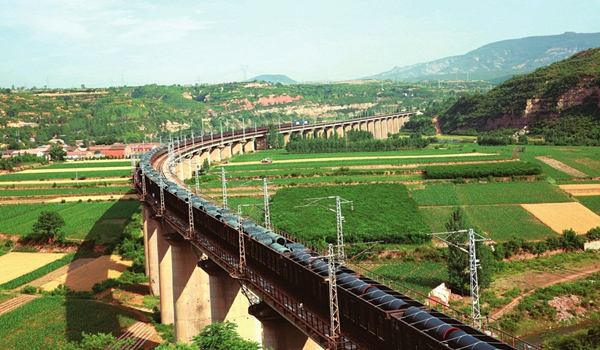Shanxi sees strong results in development of green transportation
Updated: 2024-06-17
In recent years, the transportation industry in North China's Shanxi province, adhering to the concept of green development, has achieved significant results in the green transformation and development of transportation and the improvement of air quality.
As a resource-rich province, Shanxi is highly reliant on roads to transport said resources, and the transition from road transportation to rail transportation has become an important part of green development efforts. Preliminary results have been achieved in the adjustment of the transportation structure – in 2023, the total railway freight volume in the province reached 1.01 billion metric tons, an increase of 9.8 percent compared to 2020 and accounting for 45.5 percent of the total.

A train loaded with steels heads towards Haining city, Zhejiang province. [Photo/Shanxi Daily]
Meanwhile, Shanxi has been accelerating the elimination of old and high-emission commercial vehicles, making the development of the commercial vehicle industry more environmentally-friendly and efficient. By the end of 2023, there were 14,600 new energy urban buses, accounting for 95.65 percent of the total; while among taxis, 26,900 were new energy vehicles, accounting for 64.62 percent of the total, both of which ranked among the top in the country.

The rendering of Taiyuan Wusu Zero Carbon Airport Project. [Photo/Shanxi Daily]
Furthermore, Shanxi has leveraged the carbon sequestration ability of ecological landscapes to achieve a balance between carbon emissions and absorption, and has created a "near-zero carbon" service area on Fenyang-Shilou Expressway with the ability to achieve sustainable carbon neutrality.
In addition, Shanxi has introduced the Taiyuan Wusu Zero Carbon Airport Project to promote the comprehensive green and low-carbon transformation of energy consumption at Taiyuan Wusu International Airport via the comprehensive utilization of renewable energy, multiple forms of energy storage, efficient consumption of green electricity, and intelligent management of energy and carbon.



